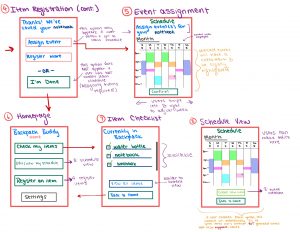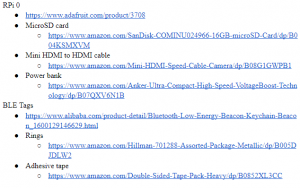Currently, the most significant risk for this project is finding a reasonable and robust testing plan for the learning system where the system will learn the user’s habits (which items they bring at which times of day on which days), as we can’t afford to wait 2 weeks for our system to learn habits each time we’d like to test the feature. One possible solution is to immediately begin collecting data from one of the team members as soon as the tags and integration with the device is done (i.e. one team member will tag and register all their items and bring their items with them from event to event for a period of time). We can also come up with carefully constructed synthetic data for testing purposes. Contingency plans we have ready include allowing the user to see their schedule as it is being developed and learned by the system so that the user can correct any mistakes our learning system makes.
Some changes were made to the existing design of the system based on feedback we received from others after our proposal presentation and more team discussion. The biggest change to our project includes the learning system, where we can learn a user’s habits after a period of time to craft their schedule and item notifications. This change was necessary because, as Professor Kim suggested, the user burden might be too large to require them to create events or sync their Google Calendar and assign items to each event. However, this change imposes additional strain on the user, as users may have to “wait” for their habits to be learned. For example, during the two weeks where our product learns about the user’s item habits, they could have already been able to use our system to help track and manage their assets. As a mitigation, the learning system will only be optional for users, in case they prefer to sync with Google Calendar or create events themselves.
We’ve currently made some tentative changes to our schedule to accommodate the learning system.
User flow diagrams and wireframes have been made for our phone app, which can be seen below. Additionally, our team has also decided on the most important items for item recognition as well as the hardware we need to purchase.





